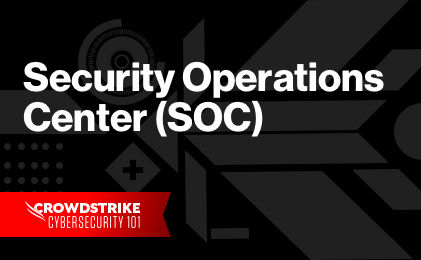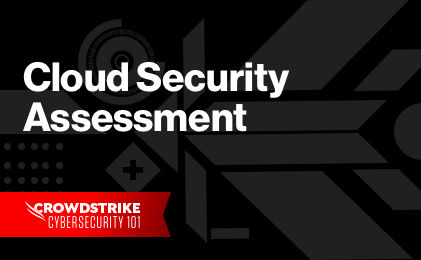Understand CNAPPs with Our Guide
Understand CNAPPs with Our Guide
Container security defined
Container security is the process of using security tools to protect containers from cyber threats and vulnerabilities throughout the continuous integration/continuous delivery (CI/CD) pipeline. Container security differs from traditional cybersecurity because the container environment is more complex and ephemeral, requiring the security process to be continuous.
To really understand what container security is, it is essential to understand exactly what a container is.
A container is a package of software and its dependencies — such as code, system tools, settings, and libraries — that can run reliably on any operating system and infrastructure. It consists of an entire runtime environment and enables applications to move between a variety of computing environments, such as from a physical machine to the cloud or from a developer’s test environment to staging and then production. Containers are a useful tool, but they are not built with a security system of their own, meaning they introduce new attack surfaces that can put organizations at risk.

The Complete Guide to CNAPPs
Download CrowdStrike's Complete Guide to CNAPPs to understand why Cloud-Native Application Protection Platforms are a critical component of modern cloud security strategies and how to best integrate them to development lifecycles.
Download NowWhy is container security important?
Organizations have begun to recognize that security should begin to the left in the application development process, a concept often referred to as “shift left”. This becomes critical as teams try to prevent vulnerabilities from being the entry point of a breach. Keeping all your digital assets protected is essential for a business or organization to remain operationally efficient. Though containers offer advantages, they also extend the attack surface. Because organizations are increasingly using containers, attackers know to exploit container vulnerabilities to increase the chance of a successful attack.
For instance, if there are hidden vulnerabilities within a container image, it is likely that security issues will arise during production when the container image is used. Having a strong container security program helps IT teams take a proactive approach to preventing container vulnerabilities.
Benefits of container security
Ensuring container security offers many benefits. Some include:
- Faster and more efficient software deployment: Automation of IT processes — from load balancing to orchestration — allows for more efficient software development and deployment without compromising network integrity.
- Lower overhead costs: Containers require fewer system resources, which means spending less on overhead.
- Improved scalability: Through quick deployment of applications operating in containers to multiple different operating systems, IT teams can speed up development, testing, and production.
What are the most common cloud container platforms?
Containers are suited for cloud environments because they deliver more services on the same infrastructure as hypervisors, which makes them more economical and faster to deploy.
There are many approaches to containerization, and a lot of products and services make containers easier to use. These are the most popular platforms that are relevant to container technology:
Docker
Docker is a container platform that lets users build, test, and deploy applications quickly. As the pioneer in its sector, Docker runs on about one of every five hosts and has over five million users and six million repositories on Docker Hub.
Kubernetes
Kubernetes is a portable, extensible, open-source platform for orchestrating containerized workloads and services. Unlike Docker, which runs on a single node, Kubernetes uses automation to orchestrate container management to run across a cluster.
Amazon Elastic Container Service (ECS)
Amazon ECS is a scalable container orchestration service that runs Docker containers on the AWS cloud. It lets users run ECS clusters with AWS Fargate, a serverless computer that removes the need to provision and manage servers and integrates natively with other AWS services.
Microsoft Azure Kubernetes Services (AKS)
AKS is the new version of Azure Container Service. AKS simplifies Kubernetes management, deployment, and operations with serverless Kubernetes, an integrated CI/CD experience, and enterprise-grade security and governance.
Google Cloud
Google Cloud enables users to migrate quickly with prepackaged cloud infrastructure solutions in hybrid and multi-cloud environments with no vendor lock-in.
Learn More
In this article, we’ll explore how containerization technologies like Kubernetes and Docker manage workloads for scalable, resilient, and platform-independent applications. Then, we’ll look at the benefits of using Kubernetes and Docker together.
Container security best practices
To protect a container environment, the DevOps pipeline — including pre- and post-runtime environments — must be secured. Some container security best practices include:
1. Image scanning
Container security starts with a secured container image. Developers sometimes use base images from an external registry to build their images, and these base images can contain malware or vulnerable libraries.
Developers also can forget to remove passwords and secret keys used during development before pushing the image to the registry. If the infrastructure is compromised, these passwords are leaked along with the images.
This is why image scanning is critical. Integrating image assessment into the build system allows you to identify vulnerabilities and misconfigurations.
2. Shift-left security
Integrating your container security tool with your CI/CD pipeline allows for accelerated delivery, continuous threat detection, improved vulnerability posture in your pipeline, and a smoother SecOps process.
3. Runtime protection
To protect application data on a running container, it’s important to have visibility within the container and worker nodes. An effective container security tool should capture and correlate real-time activity and metadata from both containers and worker nodes.
This level of visibility helps you:
- Stop malicious behavior: Behavioral profiling enables you to block activities that violate policy with zero impact to legitimate container operation.
- Investigate container incidents faster: Easily investigate incidents when detections are associated with the specific container and not bundled with host events.
- See everything: Capture start, stop, image, and container runtime information and all events generated inside each and every container.
- Deploy seamlessly with Kubernetes: Deploy easily at scale by including runtime protection as part of a Kubernetes cluster.
- Improve container orchestration: Capture Kubernetes namespace, pod metadata, process, file, and network events.
5 container security mistakes to avoid
Containers do not include security capabilities and can present some unique security challenges. The five most common container security mistakes to avoid include:
| Mistakes | Description |
|---|---|
| 1. Neglecting basic security hygiene | Basic fundamentals of security hygiene still apply to container technology. This includes staying up to date with software updates to regularly patch any vulnerabilities and ensure optimal performance. |
| 2. Having a “set it and forget it” mentality | To enjoy the benefits of all your security tools at an optimal level, it is essential to configure them to properly work with one another. If default settings are left on or there are other security misconfigurations, attackers might make moves into your environment with privilege escalation attacks. What was secure yesterday is not guaranteed to be secure today. |
| 3. Losing full visibility | Containers can lack centralized control, so overall visibility is limited, and it can be hard to tell if an event was generated by the container or its host. Because containers are short-lived, forensic evidence is lost when they are terminated. If security teams do not properly log, monitor, and test activity within all environments — especially those in multi-cloud environments — the potential loss of visibility increases the risk of unknown vulnerabilities and blind spots that attackers can exploit. |
| 4. Failing to secure the CI/CD pipeline | Many teams ignore the implementation of security from the beginning of the CI/CD pipeline, which leaves the door open for the exploitation of vulnerabilities and misconfigurations. |
| 5. Relying on traditional vulnerability scanning | Every vulnerability scan produces a massive volume of results that have to be sorted, prioritized, and mitigated. Teams that still rely on manual processes in any phase of their incident response can’t handle the load that containers drop on them. Traditional tools mostly focus on either network security or workload security. But securing containers requires attention to both, since hosts, networks, and endpoints are all part of a container’s attack surface and vulnerabilities exist in multiple layers of the architecture. |
Learn More
Learn how to use an easily deployed, lightweight agent to investigate potential threats
It can be difficult for enterprises to know if a container has been designed securely. Typically, the IT team receives a container from a development team, which most likely was built using software from other sources, and that other software was built using yet another software, and so on. Unless security was documented in the development and the container’s user has access to that documentation, it is reasonable to assume that the container is insecure.
CrowdStrike’s approach to container security
Now that you have a good understanding of how containers work and their best practices, the next step is to keep your data and applications safe from cyber threats. CrowdStrike Falcon® Cloud Security helps protect your containerized applications no matter which cloud platform your organization uses. Check out our cloud-specific security products and stop vulnerability exploitations:
Expert Tip
Watch our on-demand webcast to understand the role of EDR as part of an overall endpoint protection strategy:





